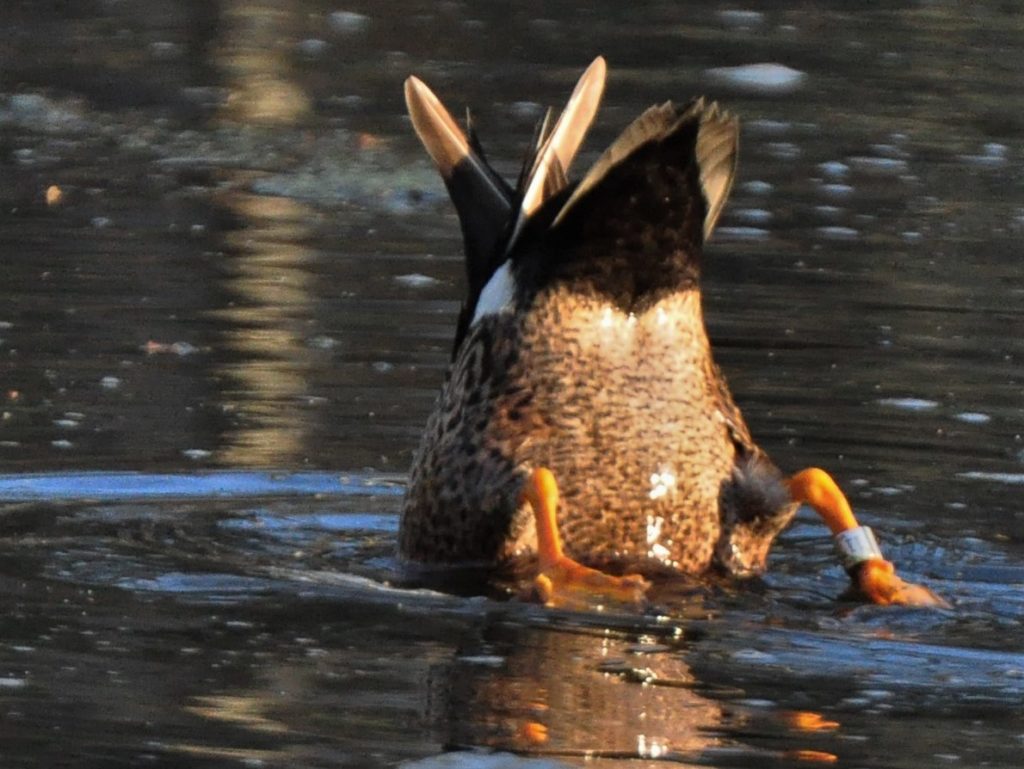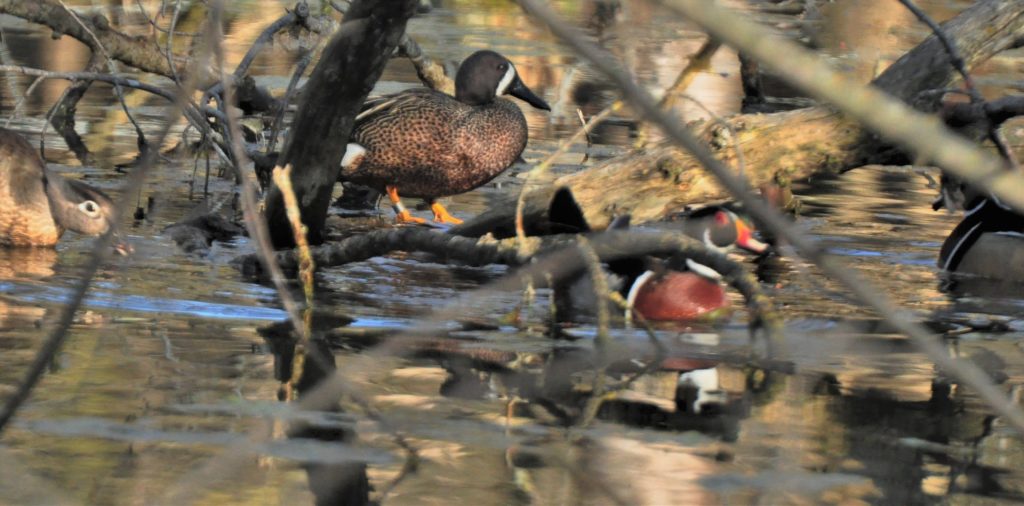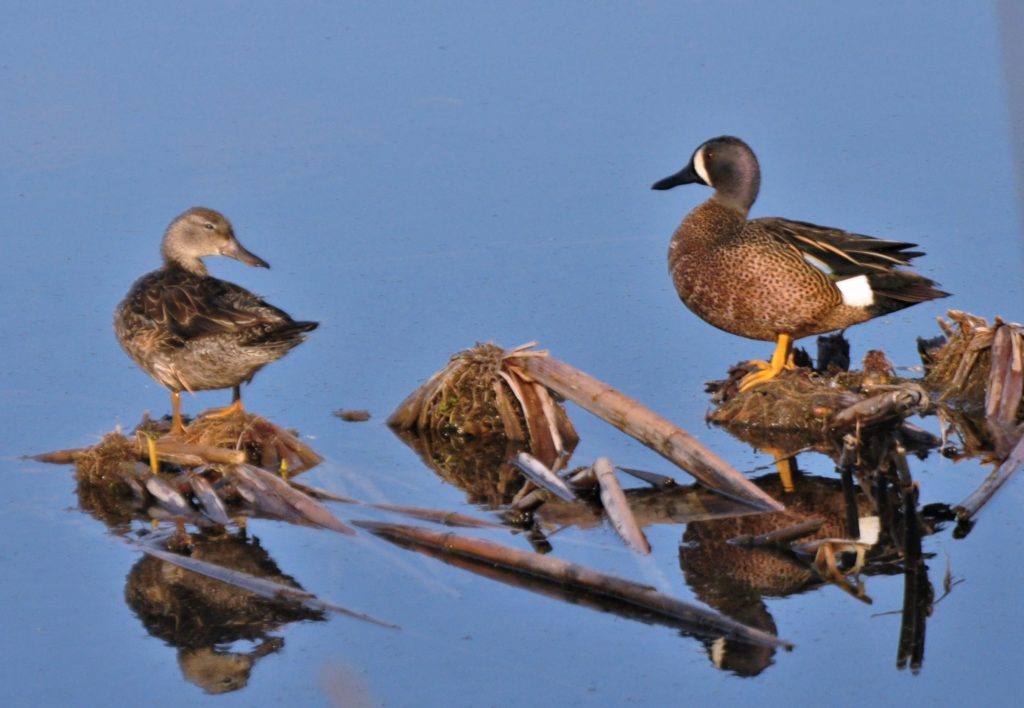Photography courtesy of Lowell Washburn, all rights reserved.
One of the things I enjoy most about viewing wildlife is that you never know what’s coming next. My latest example occurred earlier today while photographing wood ducks at a small wooded pond near Cerro Gordo county’s Zirbel Slough. I’d been sitting in the blind for a couple of hours, when a blue-winged teal came zigzagging through the canopy and loudly splashed to the water. I could tell from the bird’s crescent face marking and cinnamon speckled body that it was a drake though, I must admit, that I was amazed to see the creature. The snag-studded pond is an extremely tight habitat and is hardly the kind of place you’d expect to find a blue-winged teal – a species most commonly associated with wide open prairie marshlands. The drake was, in fact, the first and only teal I have ever seen at the pond.

Nearly as soon as it landed, the bird began ‘tipping up’ as it scoured the muddy bottom for seeds, snails and emerging insect life. Eventually, the feeding duck approached my blind. The teal was till tipping, and I had an excellent view of its kicking webs. Taking aim with the camera, I was amazed to detect a silvery glint on the foraging duck’s right leg. That glint turned out be an aluminum U.S. Fish & Wildlife Service bird band. Each bird band is engraved with a catalogued series of personal identification numbers. When reported by hunters and others, the numbers are used by biologists to track survival, migration routes, and to pinpoint critical breeding and wintering habitats of migratory birds – including blue-wings.

Blue-winged teal are long distance travelers. The majority nest in the Dakotas and prairie Canada and spend winters in Central and South America. Although a good number of blue-winged teal are banded each year, only a very small sample of the total population is marked. Bagging a banded blue-wing is an uncommon event; so much so, that most hunters will never collect a single teal band in their lifetime.
As I continued taking photos, the teal’s feeding binge lasted for another fifteen minutes. When the bird’s appetite was finally satisfied, he hopped unto the low branch of a deadfall and began preening. Feeling refreshed and refueled, the duck returned to the water and then quickly took wing – never to be seen again.

When it finished feeding, the banded teal hopped unto a low branch to preen
As I reviewed my photos, I couldn’t help but wonder — “What were the odds?” By that, I mean what were the odds that that lone teal — the one and only blue-wing I’ve ever even seen on that tiny wooded pond – would be carrying a federal bird band; and then what were the odds of that same duck showing me his leg to prove it?” The word unusual just doesn’t seem to do the event justice.


 Susan Judkins Josten
Susan Judkins Josten Rudi Roeslein
Rudi Roeslein Elyssa McFarland
Elyssa McFarland Mark Langgin
Mark Langgin Adam Janke
Adam Janke Joe Henry
Joe Henry Sue Wilkinson
Sue Wilkinson Tom Cope
Tom Cope Kristin Ashenbrenner
Kristin Ashenbrenner Joe Wilkinson
Joe Wilkinson Dr. Tammy Mildenstein
Dr. Tammy Mildenstein Sean McMahon
Sean McMahon